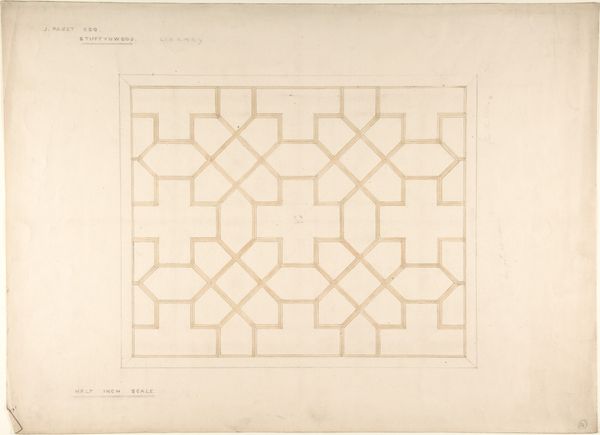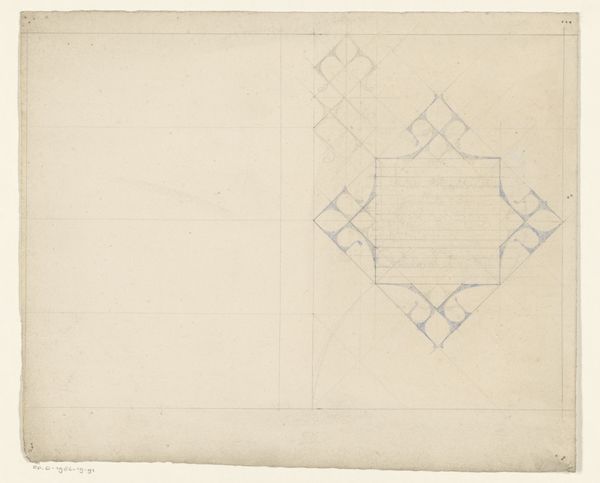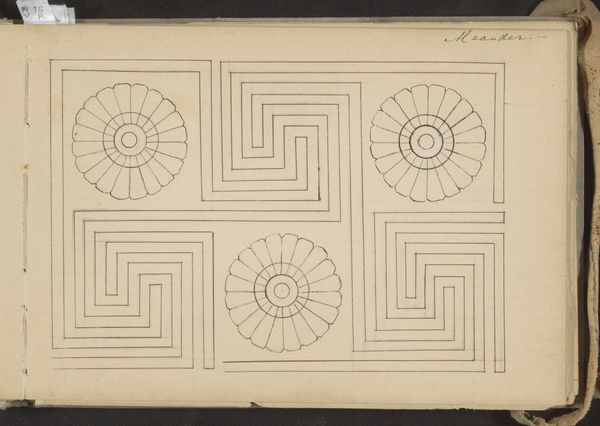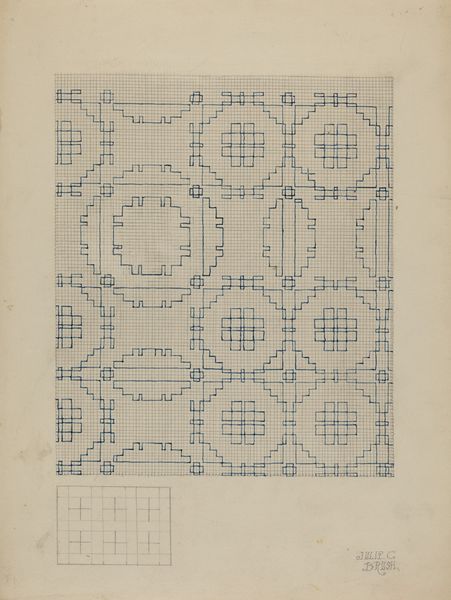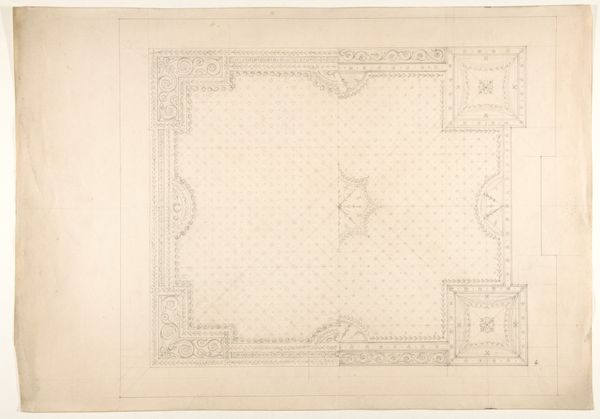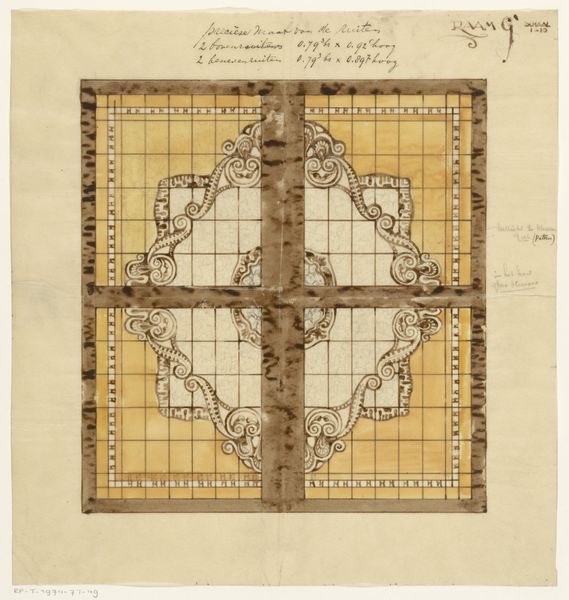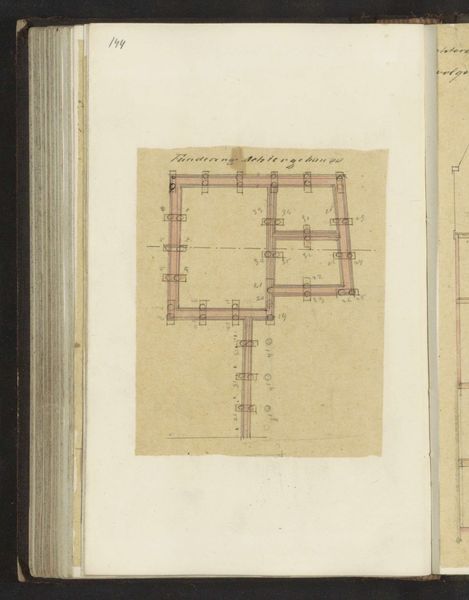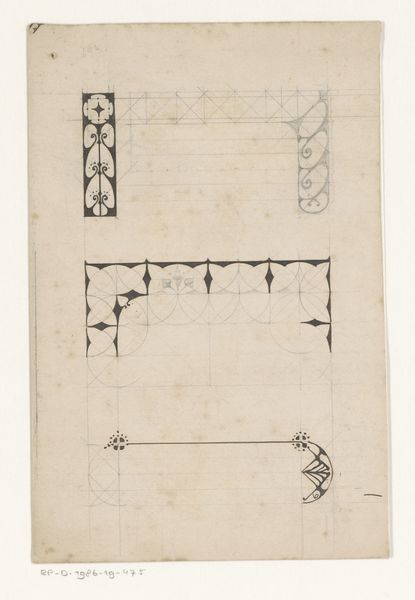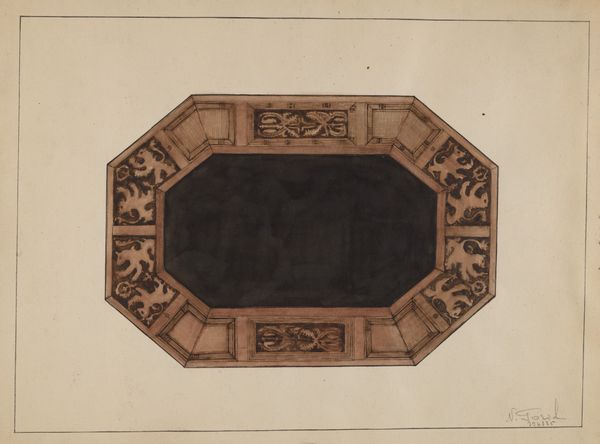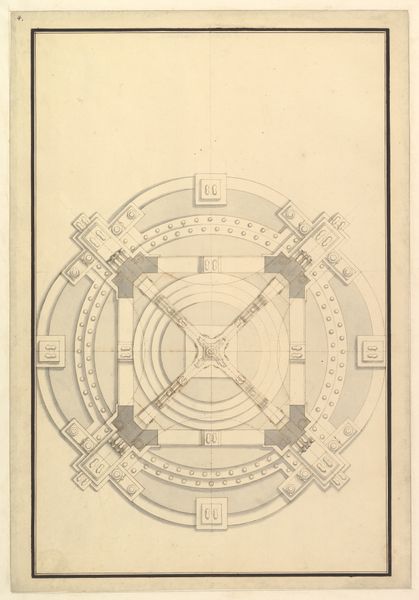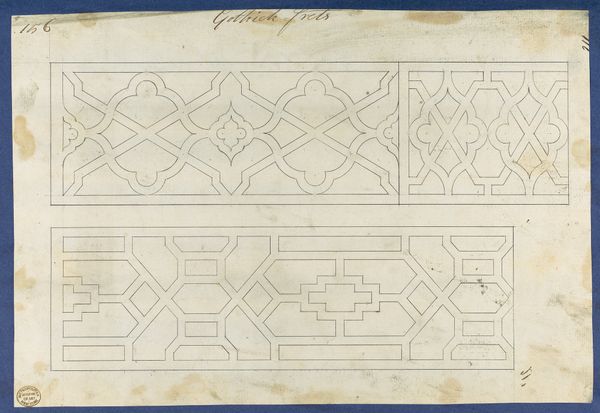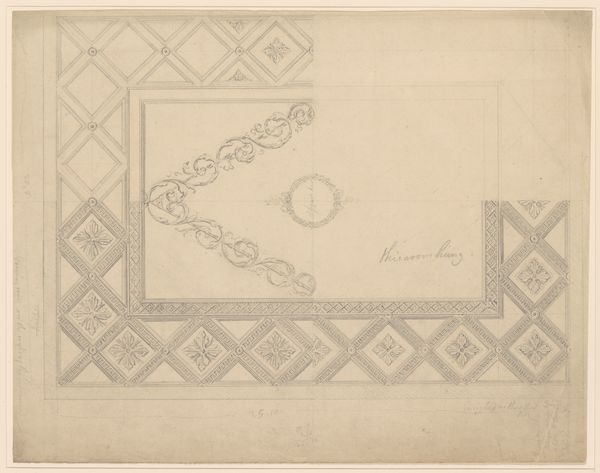
drawing, paper, pencil
#
drawing
#
paper
#
geometric
#
pencil
#
line
Copyright: Rijks Museum: Open Domain
Editor: This drawing, "Gothic Flat Decoration with Braided Work and Oak Leaves," was created by Johanna van de Kamer sometime between 1890 and 1922, using pencil on paper. It feels so precise and mathematical in its design. What can you tell me about this kind of work? Curator: Well, it's fascinating how this drawing speaks to a renewed interest in Gothic aesthetics during the late 19th and early 20th centuries. Think about the broader context: this was a period of intense nationalism, with many European nations looking back to idealized versions of their past. Doesn't this precise geometry almost seem like an attempt to reclaim some imagined historical purity? Editor: That’s a great point, I hadn’t considered the nationalism angle. The clean lines and organized structure do suggest a desire for order and clarity. But what was the original function? Curator: Exactly! Now, the ‘flat decoration’ suggests it's likely a design for architectural ornamentation or perhaps textile work. What sort of public buildings were being created at this time and were they likely adorned with similar elements? Considering these things allows us to explore the relationship between art, national identity, and the built environment. It moves it out of just aesthetic preference and to a political statement. Editor: I never would have considered its relationship to nationalism. So, by understanding its historical context, we can start to decode the social and political messages embedded within a seemingly simple drawing? Curator: Precisely! It's about seeing art as part of a larger cultural conversation. Editor: This really highlights the significance of historical context in art appreciation. Thank you!
Comments
No comments
Be the first to comment and join the conversation on the ultimate creative platform.
